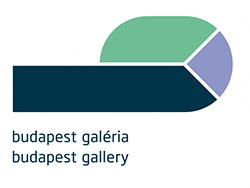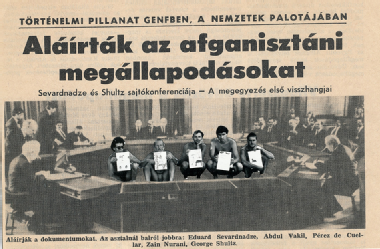RÜGYFAKADÁS | A Hejettes Szomlyazók korai korszaka (1984–1987)
megnyitó | 2017. május 30. 17:00
a kiállítást megnyitja | SZ.A.F – SZÁJJAL ÉS AGGYAL FESTŐK VILÁGSZÖVETSÉGE
web | http://budapestgaleria.hu/uj/2...
a kiállítás bezárása | 2017. szeptember 3.
A Hejettes Szomlyazók csoport 1984-ben alakult és 1992-ben szűnt meg. Akkor jött létre, amikor a korábbi korlátozások, betiltások, a legkülönbözőbb akadályoztatások már egyre kevésbé éreztették hatásukat, és a többpártrendszer konszolidációja idején oszlott fel. Földalatti formációnak indult és hivatalossá, elfogadottá vált csoportként végezte. Egyediségét éppen ez a paradox pályafutás határozza meg.
Olyan időszakban vált hivatalossá, amikor maga a hivatalosság oszladozott, és jellemző módon akkor fejezte be tevékenységét, amikor az új status quo kialakult, az új hatalom megszilárdult. Akkoriban vált konformistává, amikor a politikai-művészeti konformizmus időlegesen ellehetetlenedett Magyarországon. Ezért a csoport konformizmusa teljesen más jellegű, mint amilyen Munkácsy Mihályé volt a kiegyezés után, vagy mint Pablo Picassóé a világháborús éveket követően. A Hejettes Szomlyazók pályája pontosan leképezi egy hatalmi rendszer felbomlását és az új hatalom megszilárdulását. Munkássága ezért érdemel különös figyelmet.
Az Új Budapest Galéria a csoport korai, földalatti és fél-nyilvános korszakát mutatja be a természeti környezetben, urbánus magánterekben, marginális művelődési házakban bemutatott alkalmi produkciókat és kiállításokat; a szamizdat módszerrel készült Világnézettségi Magazin számaitól a fémhulladékból összeállított Siralomház (Munkácsy Mihály nyomán) című szoborcsoportig, melyek a csoport emblematikus produkcióivá váltak.
Első kiállításukat Kisörspusztán rendezték, a másodikat a Budapesti Műszaki Egyetem Bercsényi Kollégiumában, majd leköltöztek a Platón barlangjának nevezett légópincébe, hogy azután a Fiatal Képzőművészek Stúdiójának a Budapesti Történeti Múzeumban 1986 decemberében nyílt „éves kiállítására” álnéven becsempészett Siralomházzal robbanjanak be a művészeti köztudatba.
Ez a Munkácsy-parafrázis jelöli ki a Rügyfakadás végét, melynek folytatásaként júliustól látható a Ludwig Múzeumban a csoport intézményes keretek között létrejött műveinek szemléje A kopár szik sarja címmel. A két bemutató együtt az eddigi legátfogóbb áttekintése a Helyettes Szomlyazók pályafutásának.
A kiállítás két részből áll:
Új Budapest Galéria, 2017. május 31 – szeptember 3.
Rügyfakadás
A Hejettes Szomlyazók korai korszaka 1984–1987
Ludwig Múzeum – Kortárs Művészeti Múzeum, 2017. július 14 – szeptember 10.
A kopár szík sarja
Hejettes Szomlyazók 1987–1992
//////////////////////////////////////////////////////////////////////////////////////////////////////////////////////////////////////////////////////////////////////////////////////////////////
Budburst
The early period of the Substitute Thirsters (1984–1987)
Substitute Thirsters was a group of artists which formed in 1984 and broke up in 1992. The group was established when the former bans, prohibitions, and various obstacles used by the socialist regime had already begun to slacken, and they disbanded once the multiparty system had consolidated. They began as an underground formation and ended as an officially accepted group. Their uniqueness lies precisely in this paradoxical trajectory of their career.
The group gained official recognition at a time when official culture was disintegrating, and – characteristically – they brought their activity to an end when a new status quo had emerged and a new power had consolidated. They became conformists at a time when political-artistic conformity was temporarily impeded in Hungary. Thus, their conformism is of an entirely different nature than that of Mihály Munkácsy after the Astro-Hungarian Compromise of 1867 or Pablo Picasso after World War II. The career of the Substitute Thirsters accurately mirrors the disintegration of an old regime and the rise of a new one. Its work therefore merits special attention.
The New Budapest Gallery is presenting the group’s early, underground and semi-official period through its productions and exhibitions organized in natural settings, urban private spaces, and marginal community centres; from issues of Világnézettségi Magazin (the title contains a pun mixing the term worldview and world-views, i.e. world-views used as a ratings standard), which was made using samizdat techniques, to the sculptural ensemble entitled The Condemned Cell (after Mihály Munkácsy), which became the emblematic productions of the group.
They organized their first exhibition in Kisörspuszta and their second show in the Bercsényi Dormitory of the Budapest Technical University. With Plato’s Cave, they literally moved underground into an air-raid shelter, only to burst onto the art world by smuggling The Condemned Cell into the “annual exhibition” of the Studio of Young Artists, which opened in December 1986 in the Budapest History Museum.
This Munkácsy paraphrase denotes the end of the Budburst period. Its continuation, a muster of works by the group made within an institutional framework, will be on view at the Ludwig Museum as part of the exhibition Sparse Alkali Flats, opening in July. These two exhibitions are the most comprehensive surveys to date on the career of the Substitute Thirsters.
Opening by:
AMBPA – ASSOCIATION OF MOUTH AND BRAIN PAINTING ARTISTS OF THE WORLD
The exhibition consists of two parts:
New Budapest Gallery, 31 May – 3 September 2017
Budburst
Substitute Thirsters 1984–1987
Ludwig Museum – Museum of Contemporary Art, 14 July – 10 September 2017
Sparse Alkali Flats
Substitute Thirsters 1987–1992

Térkép
Ha egy névre vagy címre kattint az artRoll oldalakon, akkor az ikOn kilistázza, hogy az adott személy vagy esemény hol fordul elő az ikOn oldalain.





















